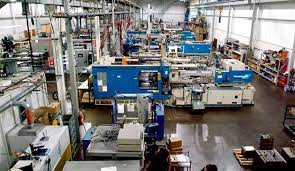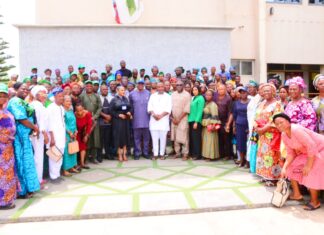Nigeria’s manufacturing stagnant, at 9% average growth
By Jeph Ajobaju, Chief Copy Editor
Nigeria’s manufacturing contributed N32 trillion to Gross Domestic Product (GDP) between 2018 and 2022 but the sectoral growth was stagnant in the five years, the National Bureau of Statistics (NBS) has disclosed.
The NBS said GDP for the five years grew to 358.32 trillion, out of which manufacturing contributed N32 trillion or 9 per cent.
The breakdown is as follows:
- 2018 – GDP N69.7 trillion (manufacturing contributed N6.4 trillion)
- 2019 – GDP N71.38 trillion (manufacturing N6.47 trillion)
- 2020 – manufacturing contributed 8.99 per cent
- 2021 – manufacturing contributed 8.98 per cent
- 2022 – manufacturing contributed 8.92 per cent
Experts and players listed factors that led to stagnant manufacturing output to include high energy cost, foreign exchange (forex) scarcity, inflation in the price of raw materials and inputs, and high interest rate.
Ide John Udeagbala, Nigeria Association of Chamber of Commerce, Industry, Mines and Agriculture (NACCIMA) President, warned a 9 per cent average contribution of manufacturing to national output shows Nigeria is falling below its industrialisation goals.
“I think that a situation where less than one-in-ten products produced in the Nigerian economy is the outcome of an industrialiaed process does not bode well for our economic growth and development objectives. This is because industrialisation is well-established as a pathway to development,” he said.
“Although Nigeria has an advanced services sector, an average manufacturing contribution of 9 per cent to national output (GDP) indicates that we are falling well below our industrialisation goals.”
Manufacturers Association of Nigeria (MAN) Director General Segun Ajayi-Kadir stressed that “conceptually, manufacturing is unarguably the backbone of national economic development.
“It is countries that can transform their raw materials into a wide range of furnished goods and add prosperous value. Beyond the role of the sector in the domestic economy, manufactured exports expand the scope of trade, commerce and foreign exchange inflow.”
__________________________________________________________________
Related articles:
Manufacturers express concern over N470b unsold goods
Manufacturing output down nearly 10%
Manufacturers complain they can’t access CBN loan
__________________________________________________________________
Prioritising manufacturing
Stakeholders at the 2023 Equipment and Manufacturing West Africa (EMWA) conference implored Abuja to prioritise the manufacturing sector through policies that encourage local and foreign investment, per Nairametrics.
“Despite how the election year has turned out to be and with a new government in place, I urge them to come out, collaborate with the private sector and put manufacturing at the forefront of their policies to build a better Nigeria,” Event Director Joseph Oru pleaded on the sidelines of the conference.
NBS report on GDP for the first quarter of 2023 (Q1 2023) shows manufacturing slumped from 4.28 per cent in Q4 2022 to 1.61 per cent in Q1 2023.
However, its contribution to GDP was 10.13 per cent in Q1 2023, higher than the 8.40 per cent in Q4 2022.













